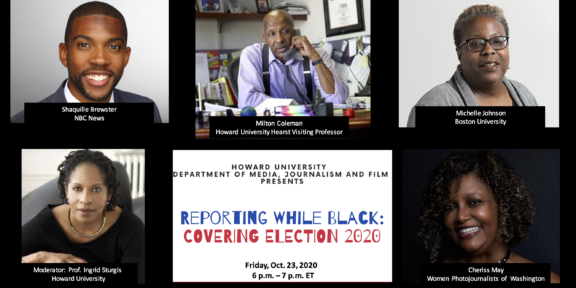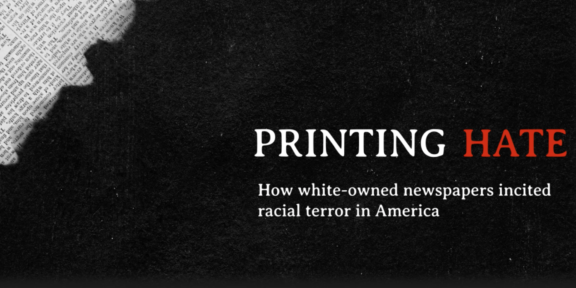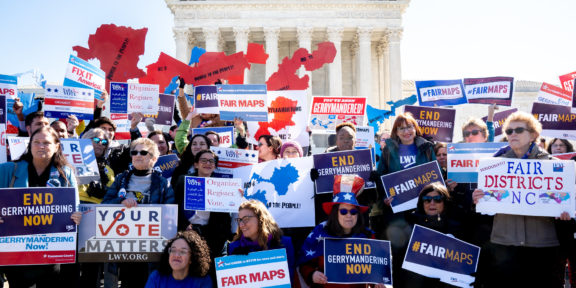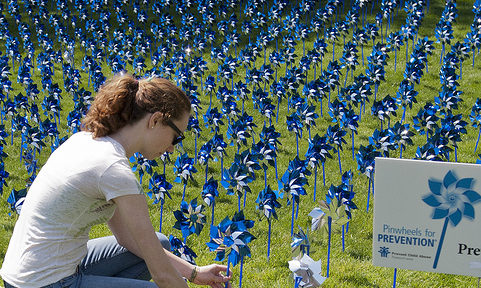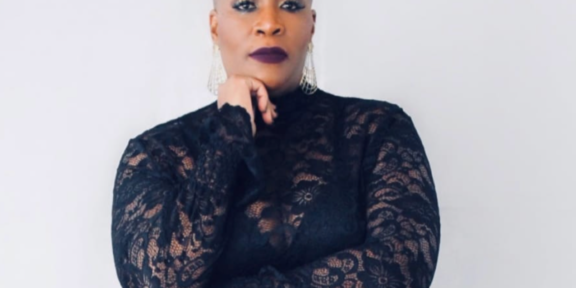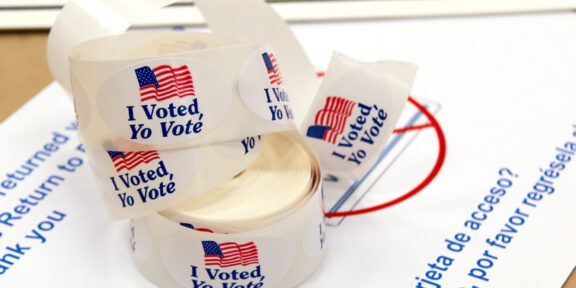By Arthur Cribbs
Howard University News Service
Rico Kennedy made quite a name for himself as a star linebacker on a powerhouse high school football team in South Florida, but that was not enough to get him recruited by a top college program. After a year at the U.S. Military Academy, he got another chance, and accepted a scholarship to play for Morgan State University in Baltimore.
There, Kennedy earned a litany of awards: one of the best at his position in a flagship conference; a pre-season contender for selection as the Black College Football Player of the Year; and, at season’s end, an All-American.
Still, he was not among the 337 college players invited to pro football’s elite talent showcase and job fair, the NFL Scouting Combine in Indianapolis in February. Only one player from a Historically Black College or University (HBCU) made that cut.
Opportunity knocked yet again. Kennedy, two Morgan State teammates and 48 others were chosen to take part in a first-time special combine for HBCU athletes in late March at the facilities of the Miami Dolphins—just 10 minutes from where he grew up.
But the coronavirus crisis forced the NFL to scrub the event. Rico Kennedy, accustomed to being overlooked, kept a positive outlook.
“Being recognized as one of the top HBCU players in the nation [is] a complete blessing,” he said in a telephone interview. “Everything that’s going on in the world right now is bigger than football right now, so I understand the cancellation.”
Kennedy’s perseverance despite dreams deferred is shared by many others at HBCUs, which for decades were the breeding ground for athletes of color pursuing professional careers.
Nowadays, college athletics and recruitment—especially football—have become as much about school revenues and resources as about a student athlete’s on-field performance as a path to a personal paycheck hardly imaginable back in the day.
At predominantly white Iowa State University, for instance, football provides 75 percent of the money in the school’s $90 million annual budget for athletic programs. A recent study by researchers at Ohio State University reported that having a single top recruit on a roster can add between $150,00 and $650,000 a year to a football program’s coffers.
While the starting annual salary for college graduates with degrees in computer science, engineering or math ranges from $60,000 to $75,000, a first-year player on an NFL team draws an average salary of about $480,000 a year. Each of the last 10 players chosen in the last round of this year’s draft is expected to have a first-year salary in the range of $630,000.
The combine was a brainchild of Troy Vincent, the NFL’s executive vice president of football operations. Vincent said he was especially disappointed by the cancellation because only one HBCU player had been invited to the combine in Indianapolis.
“We pride ourselves on saying, ‘If you play, the game, we’ll find you.’ And we’re seeing that that hasn’t really played out that way,” Vincent told veteran sportswriter David Steele. “We must remind everyone,” Vincent said, “that the greatest players who have ever played at the professional level came from HBCU’s.”
The combine would have given each of the invited HBCU players an opportunity to show dozens of pro scouts, coaches and team executives their raw physical abilities, mastery of basic skills like passing, blocking and tackling, and a chance to talk one-on-one about the way they think about the game.
“There are so many players from HBCU schools…that aren’t properly scouted,” NFL Network reporter Steve Wyche said. “So this is just another opportunity for scouts to get their eyes on players.”
One indication of the degree to which HBCUs have fallen by the wayside as the fortunes of college football have risen can be found in campus athletic facilities.
The Morgan State Bears play home games in a 10,000-seat multi-purpose stadium. An hour down the road from Baltimore, the University of Maryland Terrapins play home games in a football-only stadium in College Park that packs in more than five times as many.
Both schools are part of the Maryland public college system, yet the difference between the two reflects a disparity between programs at many other HBCUs and their predominantly white cousins.
Grambling State University, a legendary HBCU football program in Louisiana, has a stadium that seats 20,000. Grambling recently spent $30,000 on a new weight room in its training facility and $2 million on stadium renovations.
The stadium at predominantly-white Louisiana State University (LSU) in Baton Rouge, can seat more than 100,000, and the university last year completed a $28 million renovation to its football facility.
LSU’s refurbished complex features “a new and improved locker room that includes sleeping pods for each individual player,…a revamped players’ lounge” and a nutrition center that “serves just about every food imaginable—even jumbalaya,” Sporting News reported.
Only one HBCU player was drafted into the NFL this year. The Chicago Bears chose Tennessee State guard Lachavious Simmons in the seventh and final round. Simmons was the 227th of 255 players selected. He did not take part in the scouting combine in Indianapolis.
The last time the Bears drafted an HBCU player was 2017, when they took Tarik Cohen, a running back from North Carolina A&T State University, in the fourth round. The following year, the Oakland Raiders selected another A&T Aggie, offensive tackle Brandon Parker, in the third round—the 65th player picked. And the year after that, Darryl Johnson Jr., also from A&T, was the 225th player chosen.
Cohen and Parker were North Carolina native sons who won scholarships to attend the nation’s largest public HBCU. Cohen is only five and a half feet tall and weighs less than 200 pounds. That was enough to convince many college programs to look another way when he knocked on the door.
A&T opened up, and Cohen ran through. He set an all-time MEAC rushing record, and led the Aggies to a national black college football championship. In his second season as a Chicago Bear, he was plucked to play in the Pro Bowl, the league’s post-season all-star contest.
The Aggies have been the HBCU national champions four of the last five years. Early this year, however, A&T announced that it would be leaving the MEAC in 2021 to join the Big South Conference, all but one of whose members (Hampton University) are predominantly white schools.
The move is expected to raise A&T’s athletic profile because the Big South has a higher level of competition and more of its games are nationally televised. Belonging to the Big South also will save time and money. In the MEAC, Aggie teams would travel an average of about 330 miles to take on football opponents. That distance will be cut in half.
“There will not be as much time away from class because players won’t have to travel as much,” Brian Holloway, the school’s Associate Athletic Director of Communications, said in a telephone interview. “We’re hoping that some of the money we save will go back to student athletes for more scholarships.”
North Carolina A&T’s three-year run in the NFL draft that Cohen’s choice initiated enhanced its reputation as a destination program for high school hopefuls.
“Tarik comes back and does a summer camp with our players,” Holloway said. “He, Brandon Parker and Darryl Johnson Jr. are proud Aggies, which goes a long way to help us recruit, and help us to convince other young men to come to N.C. A&T.”
Such a boost could be critical to HBCU programs as they compete not only for those like Cohen, proverbially described as ‘diamonds in the rough,’ but also for those already labeled a cut above the rest before they even get to college.
Kayvon Thibodeaux, a California high school standout and 2018’s most coveted prep talent, considered several college possibilities, including Florida A&M University (FAMU), an HBCU and perennial contender for top honors in the MEAC.
Thibodeaux chose to play for the University of Oregon. In the last six years, NFL teams have drafted 17 Oregon Ducks, including two chosen in the first round in 2015. Oregon football teams play home games in a stadium that seats 54,000, and work out in $68 million training and practice facilities.
NFL teams have drafted only two FAMU Rattlers in the past decade, both in the seventh round, the 245th and 250thplayers chosen in those years.
“In this day and age, it’s about money,” Thibodeaux told Jemele Hill of The Atlantic. “Unless HBCUs upgrade drastically, I don’t know if things will change. …Nobody wants to eat McDonald’s, when you can get filet mignon.”
Morgan State’s Rico Kennedy is a family man, with a working wife, and two children. As college sports have become a bigger profit center for schools and coaches, efforts have been underway to allow student athletes to receive some of the money they generate during their collegiate careers.
Five years ago, football players at Northwestern University came close to gaining federal recognition as a labor union. Late last year, a former Villanova University football player filed a proposed class action lawsuit accusing the NCAA and some member schools of failing to pay student athletes “the legally required minimum wage for all hours worked.”
California approached the issue differently. Last year, it passed a “Fair Pay to Play Act” that will allow collegiate players to earn money from endorsement deals and other money-making ventures that use their names and images.
“States are looking for a leg up in recruiting top athletes; their compensation introduces a new economic prize over which to compete,” Oklahoma State University political scientists Roshaun Colvin and Joshua Jansa wrote for The Washington Post. “Because of [the law], star players will now have to weigh endorsement opportunities when deciding where to play,” they added.
Maryland is among several states pondering the California model.
“College athletics has become a money-driven enterprise, and all of that money stays in the hands of the conferences and the coaches,” Del. Brooke Lierman, a Baltimore Democrat, said in a telephone interview.
“The benefits of using a name, image and likeness model instead of a payment model is that the school is not the only factor in deciding how much money or what kind of benefit can derive from your likeness.”
Even student athletes at HBCUs with lesser known programs could benefit, she said: “If you are an amazing female gymnast at Morgan State and you go to the national championships, for example, you can benefit from your notoriety. Who you are matters more than where you go to school.”
Hill of The Atlantic advocated an admittedly more radical approach in an article headlined, “It’s Time for Black Athletes to Leave White Colleges.”
“If promising black student athletes chose to attend HBCUs in greater numbers, they would, at a minimum, bring some welcome attention and money to beleaguered black colleges, which invested in black people when there was no athletic profit to reap,” she wrote.
“More revolutionarily, perhaps they could disrupt the reign of an ‘amateur’ sports system that uses the labor of black folks to make white folks rich.”


